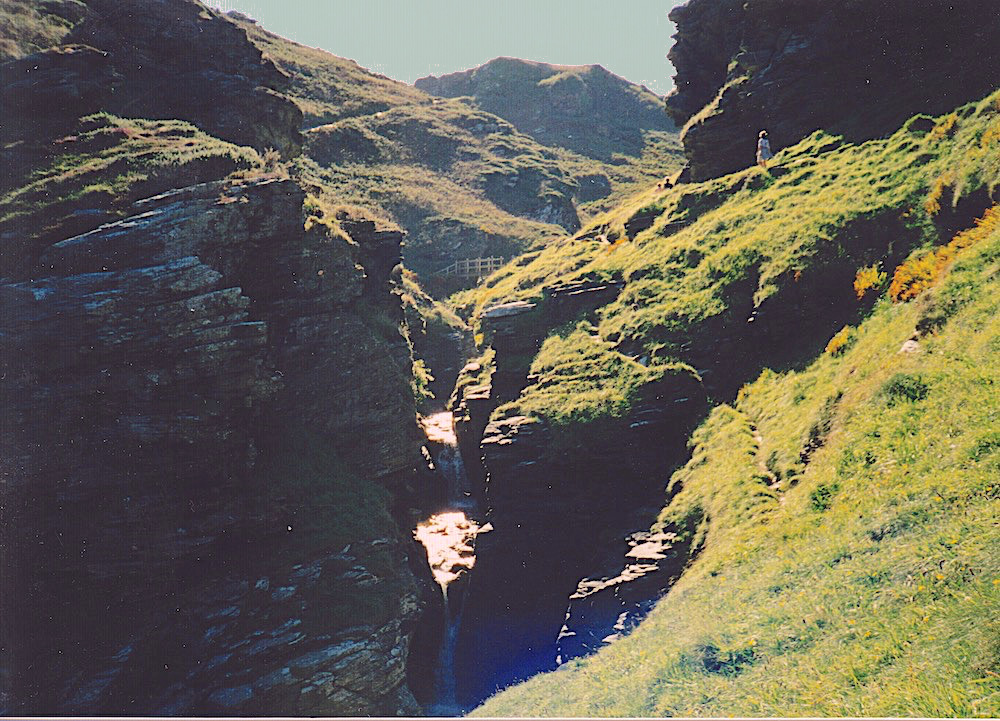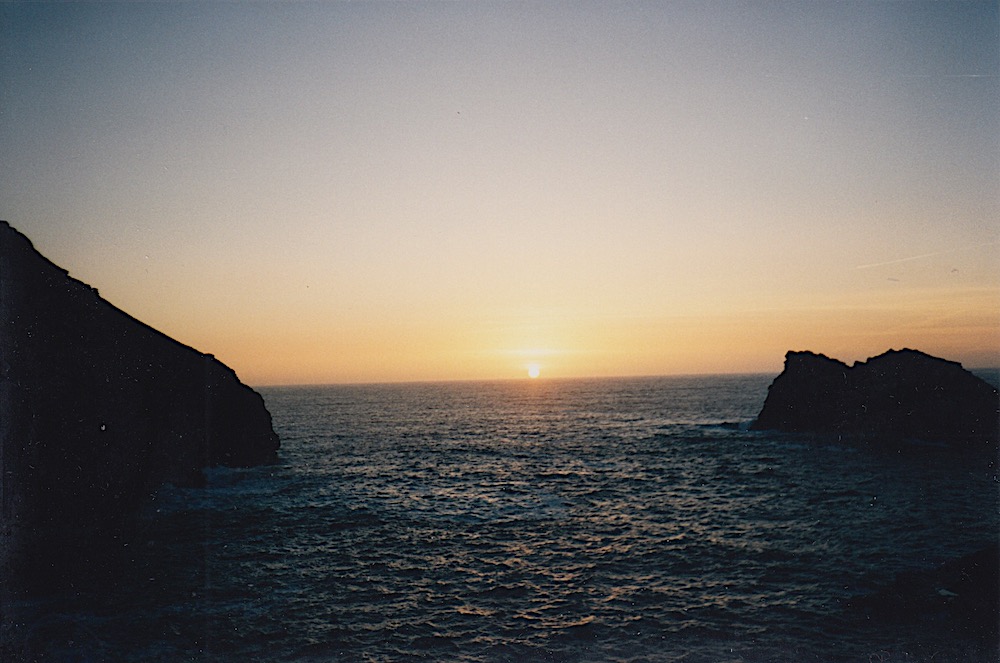

The path along the Valency River, in its well-wooded upper reaches, is very much the "copse-covered valley" of Thomas Hardy's A Pair of Blue Eyes (95). It leads eventually to what is aptly described as "one of the grandest harbours on the coast, with huge sloping cliffs running alongside and curving round, making the entrance both difficult and dangerous" (Mitton 89-90). This is the harbour at Boscastle, the "Castle Boterel" of A Pair of Blue Eyes


The rocky inclines can be dangerous, especially to the unpractised visitor, as Henry Knight and the vicar's daughter, Elfride Swancourt, find to their cost in A Pair of Blue Eyes. When Knight falls, Elfride saves him by the improper but necessary expedient of letting down a rope made out of her "knotted and twisted plumage of linen, lace, and embroidery work" (279) in other words, her petticoats.


Describing the rocky surroundings, G. E. Mitton notes how the waves "dash in with tremendous force, especially with a westerly wind, which is common, when some grand sights may be seen. The black walls of the slate rock and the white spray of the shattered waves and the strange blue tint of the sea compose some pictures finer than any that have yet found their way on to a painter's canvas" (91). Seen from the path along the cliffs, sunset over the sea is a magical sight.
Related Material
- On the Cliffs (illustration for A Pair of Blue Eyes, possibly based on a sketch by Hardy)
- Elfride's attempt to help Knight (another illustration for A Pair of Blue Eyes)
- Thomas Hardy's "Castle Boterel"
- Thomas Hardy's Other Career (as an architect)
Photographs from 1999, text and formatting by Jacqueline Banerjee. You may use these images without prior permission for any scholarly or educational purpose as long as you (1) credit the photographer and (2) link your document to this URL in a web project or cite it in a print one. [Click on the images to enlarge them.]
Bibliography
Hardy, Thomas. A Pair of Blue Eyes. 1873. London: Penguin (Penguin Classics), 1986.
Mitton, G. E. Cornwall. London: A. & C. Black, 1915. Available on Project Gutenberg.
Created 20 December 2020
Last modified 19 April 2024